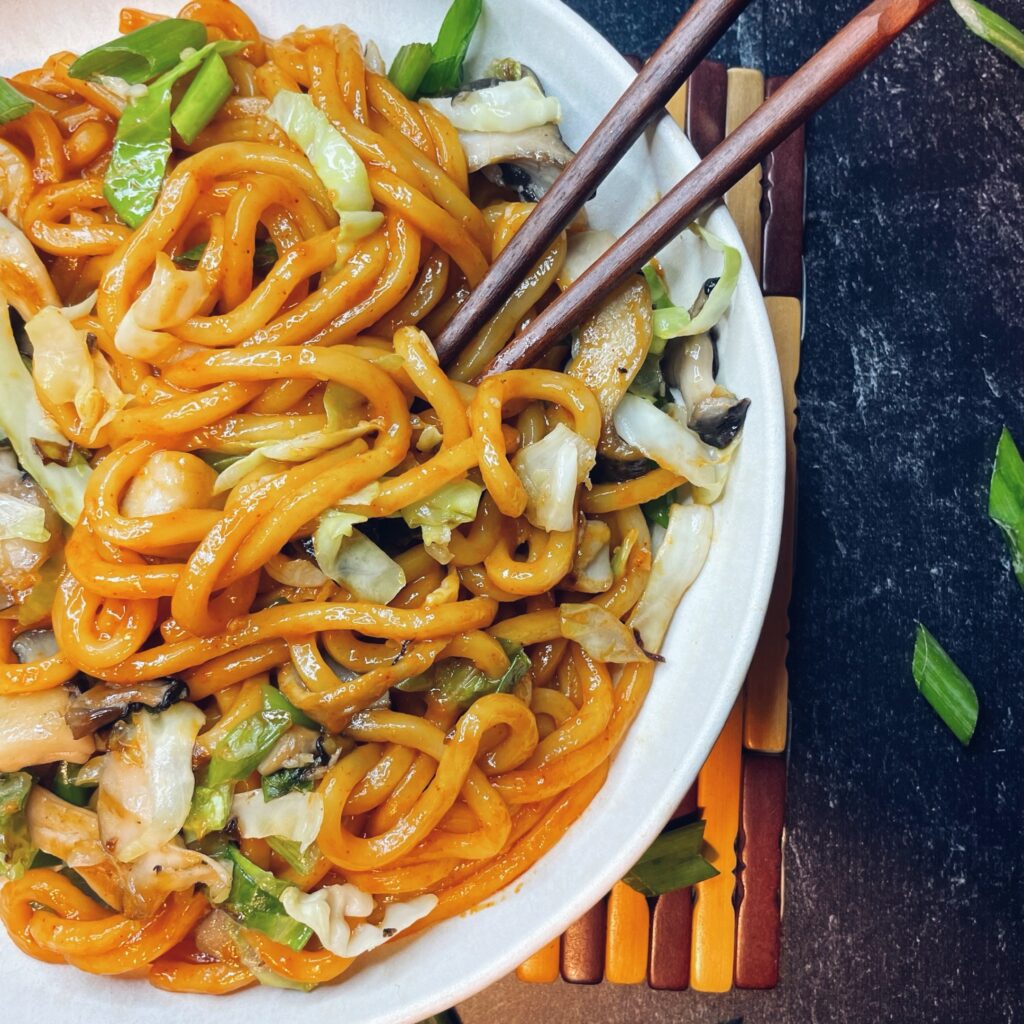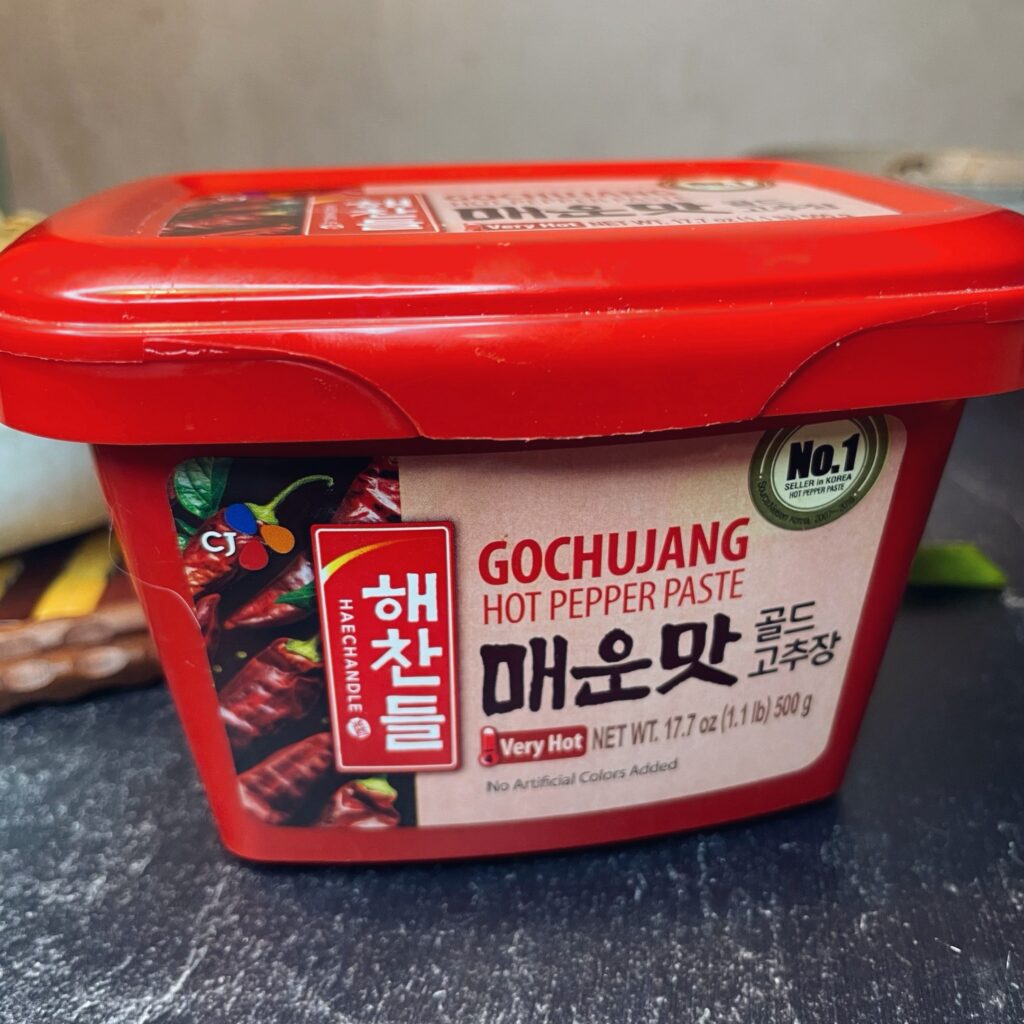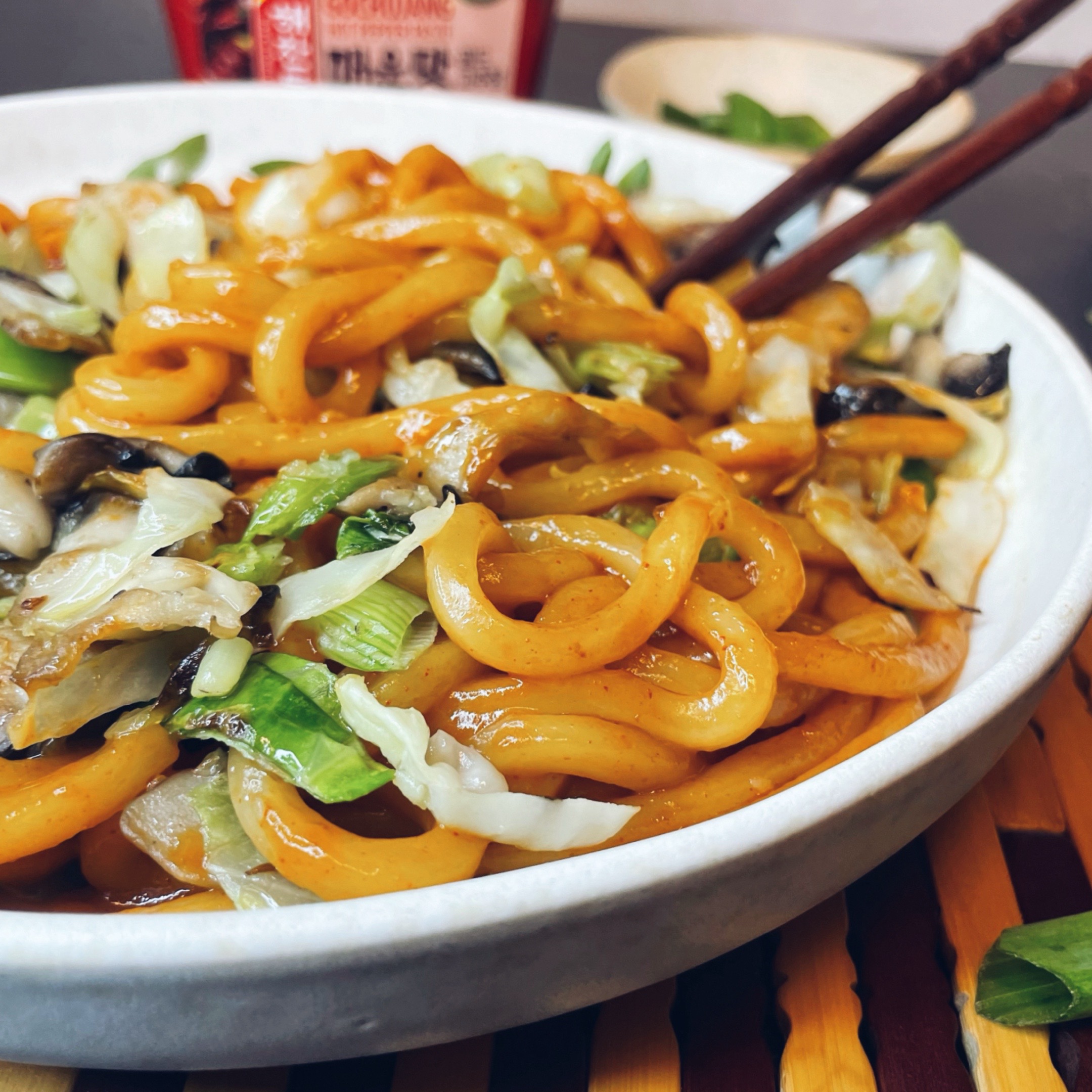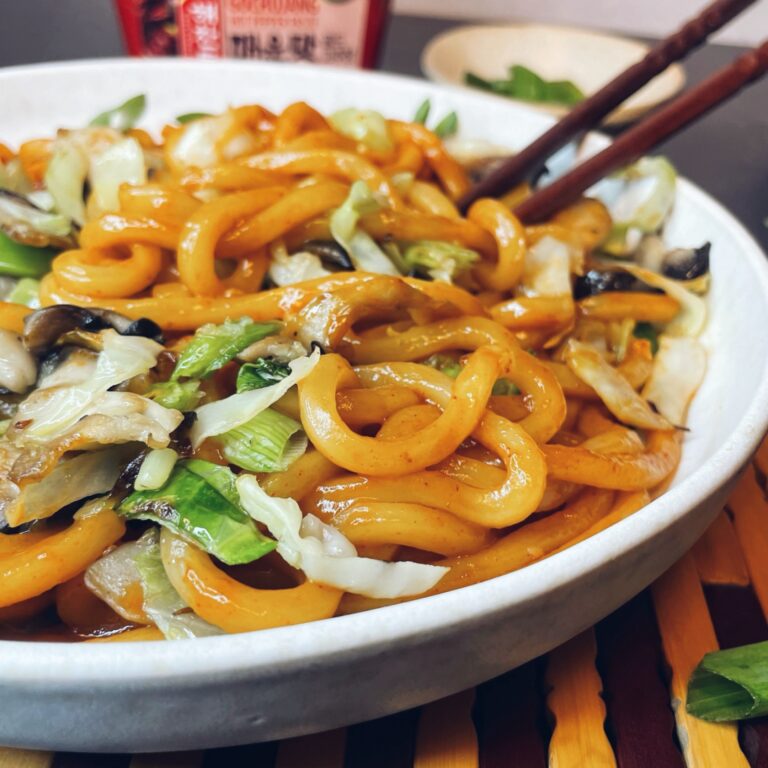My love language every single time is sitting in an alleyway with a cheap bowl of spicy noodles. It takes me back in time, to the months spent backpacking through Asia. For a moment, those countries felt like home. With a motorbike to call my own and alleyways begging me to get lost in their winding labyrinth. The biggest problem I had was deciding which local vendor to buy from. And guess what? I never missed. Because you are simply never going to miss ever while sitting on a stoop and slurping down a bowl of noodles topped in a red chili while your eyes water. Even now it is hard for me to determine if the watering eyes came from the spice radiating from my bowl or simply the fact that I was living in a dream and that one day it would be just a memory.

Choosing Plant-Based Noodles
I personally love switching up my noodles often. One day I am stuck on a skinny rice noodle and the next all I can think about are those thick fresh udon noodles. Ahhhh the joy of noodles, I could write sonnets about them for the rest of my life. Here are some of my top choices for noodles in this Gochujang Noodle recipe. And as always, we are searching for vegan noodles so watch that your noodles don’t contain eggs. The ones I am suggesting below typically are eggless.
- Udon– Find these in the fresh/frozen section of your grocery store. Since udon noodles are typically only made of water and flour (possibly starch) these are a safe plant-based bet.
- Rice– Made of rice flour and water, these are a great choice to use in your plant-based asian noodle dishes.
- Glass– These noodles are made of a variety of difference starches (from potato starch to mung bean starch) and water.
- Soba– Made of buckwheat flour and water.
- Ramen– Made from wheat flour, water, salt, and kansui. Kansui is the alkaline mineral that gives ramen noodles their elasticity. It’s also the culprit of making the noodles yellow, and the main reason ramen noodles are falsely believed to have egg.
Korean Gochujang Paste:
Spicy fermented red chili paste

If I were to choose one quintessential Korean ingredient, hands down we are getting gochujang paste. This incredibly versatile ingredient is a staple in so many classic Korean dishes. Here are some of my favorites to add this paste to.
- Soups
- Noodle dishes
- Korean Kimchi Pancakes


